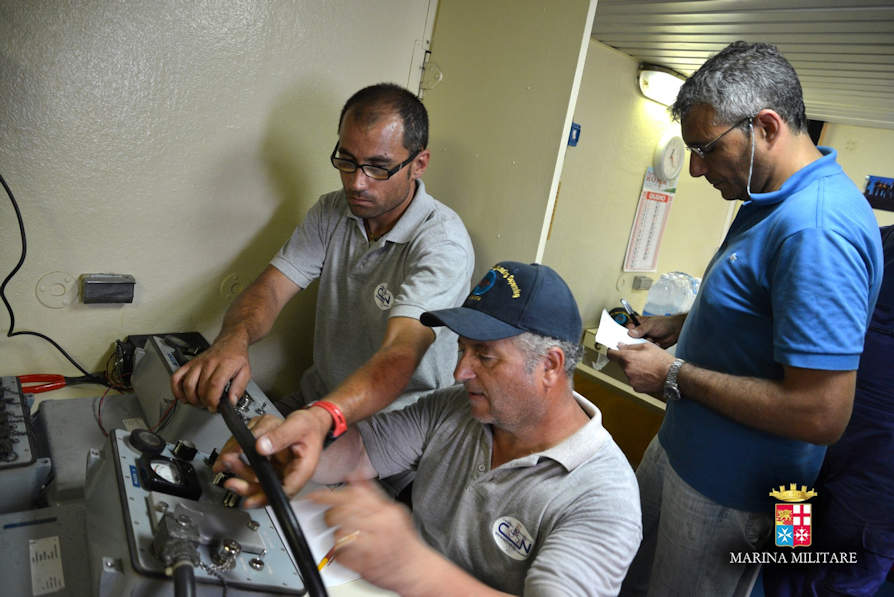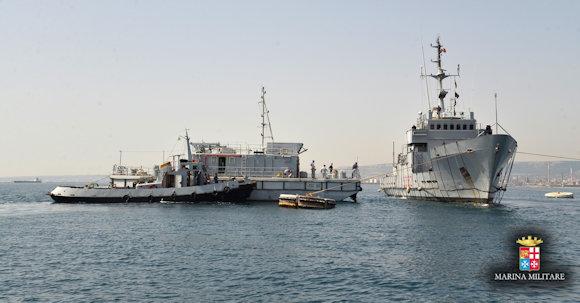On board military ships, the systems for "Degaussing" (demagnetization) are used to compensate the magnetic field generated by the ship in order to make it as neutral as possible with respect to the surrounding environment. The degaussing it is a very important system because it protects military ships when navigating in areas subject to the threat of magnetic mines. These insidious devices, in fact, are activated when they register a sudden change in the magnetic field, clear evidence of the passage of a ship.
The system is based on four orthogonal belts (rings degaussing) that internally surround the hull, connected with a magnetometric probe that measures the Earth's magnetic field.
To keep the systems efficient degaussing periodic calibrations and checks of the ships' equipment are required. To do this, use the stations of degaussing.
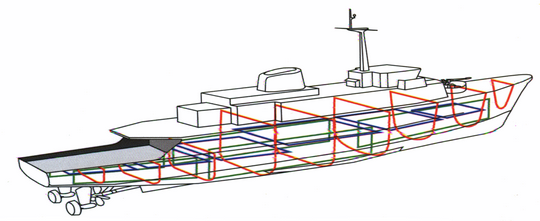 The Navy has a station degaussing in Augusta, which depends, from a technical and operational point of view, on the Naval Support and Experimentation Center of the La Spezia Navy.
The Navy has a station degaussing in Augusta, which depends, from a technical and operational point of view, on the Naval Support and Experimentation Center of the La Spezia Navy.
The station is located within the Terravecchia area, at the Sicily Maritime Command of Augusta and is used for the surveys and calibration of the systems embarked on the ships and submarines of the Italian Navy, sometimes also for foreign navies.
In fact, the station recently worked on U212 class boats and ensured the testing and first calibration of the FREMM class frigates while, from overseas, the Canadian Navy decided to use the Italian structure to test its Halifax class units. .
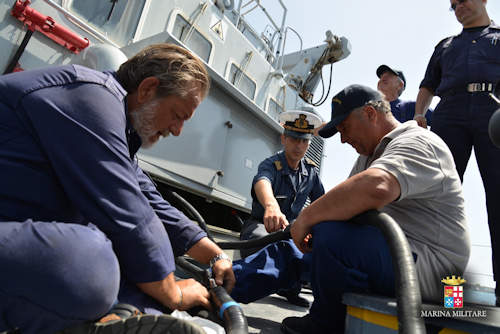 Together with degaussing the station is able to play also the Deperming, intervention on the iron masses of ships to reduce permanent or residual magnetism. In this area, 2015 in June was the first magnetic processing with manpower and equipment exclusively inside the Navy, providing the so-called "deperming in house"The station currently has five military personnel and ten civil servants.
Together with degaussing the station is able to play also the Deperming, intervention on the iron masses of ships to reduce permanent or residual magnetism. In this area, 2015 in June was the first magnetic processing with manpower and equipment exclusively inside the Navy, providing the so-called "deperming in house"The station currently has five military personnel and ten civil servants.
An integral part of the Augusta station is an offshore polygon, made up of three measuring bases located at different depths and of different widths, placed inside a buoy field; each of the three bases contributes to magnetic measurements for ships within a certain range of size and displacement.
The signal measured inside the measurement base is transmitted, via submarine cables, to the ground, in the station equipment room degaussing, where there are piloting equipment and data processors that are used by the operators to manage the acquisition phase and to verify the correct operation of the ship's magnetic compensation system.
Parallel to the magnetic acquisition system, there is a laser tracking system to determine - moment by moment - the position of the ship and correctly distribute the magnetic data on the measurement plane. Then, before the start of the acquisitions, two reflectors are installed in the fore and aft of the unit that serve to calculate the position of the ship with the laser.
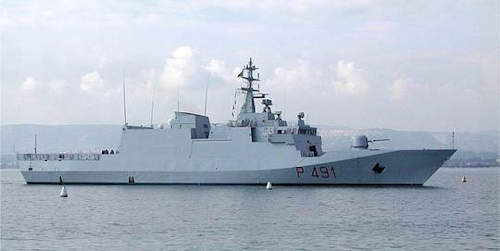 For Deperming - the modification of the permanent or residual magnetization of the ship to minimize the external magnetic field - the Augusta station has a floating pontoon, equipped with current generators which, through electric cables with which the unit is literally "wrapped", damage life to the so-called "magnetic shaking". The station also has a buoy field, where you can moor the ship and perform the treatment while at sea.
For Deperming - the modification of the permanent or residual magnetization of the ship to minimize the external magnetic field - the Augusta station has a floating pontoon, equipped with current generators which, through electric cables with which the unit is literally "wrapped", damage life to the so-called "magnetic shaking". The station also has a buoy field, where you can moor the ship and perform the treatment while at sea.
The station degaussing e Deperming of the Augusta Navy is a very important reality because it contributes to guaranteeing the maintenance autonomy of the Fleet in an extremely delicate and current sector, such as the defense against explosive devices, but it is also a resource that is made available to foreign marine partners, with a view profitable use of infrastructure and staff skills.
